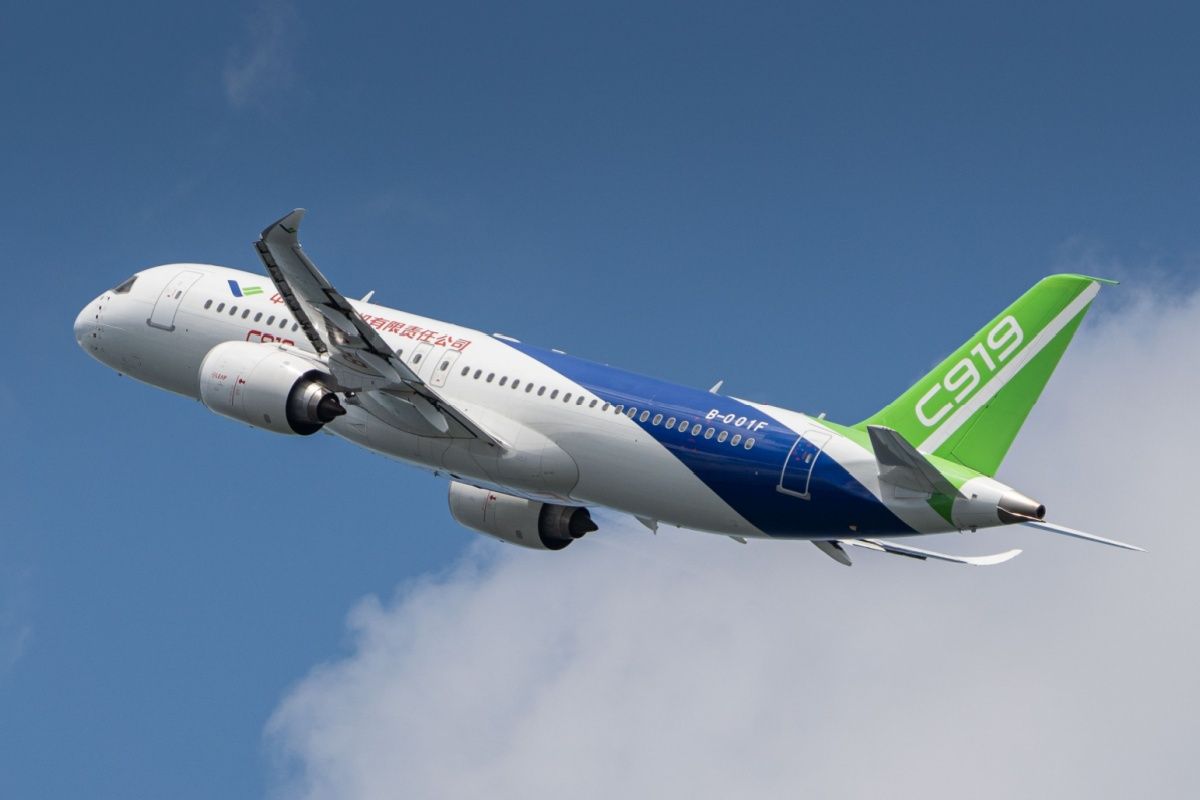Summary EASA certification for COMAC C919 may still be years away, conflicting reports surface in 2024. COMAC requested EASA approval in 2019 but now faces a gap due to COVID-19, making timeline uncertain. Western certification is crucial for COMAC's international success, but FAA and EASA approvals are challenging to secure.
The COMAC C919 is now in limited use in China. It received its CAAC-type certificate in September 2022 and has been operational in China Eastern Airlines since May 2023. But so far, the jet lacks American FAA and European Union Aviation Safety Agency ( EASA ) certifications, meaning it is unable to in most international markets.

While a recent EASA audit's favorable feedback spurred discussion that the COMAC's certification may be getting closer , other reports suggest it is still some time away. COMAC C919 EASA certification may be years away In May 2024, Aviation Week reported that China hopes the COMAC will receive EASA certification in 2025. Obtaining EASA certification would enable it to be flown in most international markets.
However, a Reuters article published in March 2024 casts cold water on these hopes. Top EASA officials told Reuters it will take " whatever time is needed " to approve China's new A320 and Boeing 737 competitor. Currently, the C919 cannot fly in Europe, and European regulators need to decide whether to grant their own validation of China's certification of the jet and ensure that imports meet European safety standards.
COMAC C919 timeline Project launch: 2008 First production (prototype): 2011 First prototype rolled out: 2015 Maiden flight: 2017 CAAC type certification (Chinese certificate): 2022 Entry into service: 2023 Luc Tytgat (the acting executive director of EASA) stated that COMAC first requested the European agency to approve the jet in 2019, but then COVID-19 stopped work. COMAC later re-launched the bid and requested the work be completed by 2026. However, this has created a gap, and European regulators now need to reconnect with the plane and the changes the Chinese have made during the COVID-19 years.
Industry sources have warned that the landmark approvals from Western regulators could take years. Tytgat said in an interview, " Honestly, I don't know if we will be able to do it yet: the plane is too new to us to know how easy or difficult it will be. " Reuters notes, " Tytgat's comments suggest EASA is at the 'technical familiarisation' stage, which experts say is the first part of a certification process that can last five years or more.
" China's Big Three will all become C919 operators next week. Western certification needed for export success China is one of the world's largest aviation markets, with demand for thousands of short-haul commercial passenger jets. This means the C919 could receive significant orders just from China's domestic market.
However, in order for the COMAC to become an international success and to be exported in large numbers, it needs EASA and FAA certification. In 2018, the COMAC's flight deck design was re-evaluated to comply with US FAR Part 25.1302 regulations, as this would be needed for an eventual FAA certification.
While EASA certification may be in the offering (even if years away), FAA certification is another story. It should also be noted that aircraft certification carries a political dimension. Before the Full-Scale Russian Invasion of Ukraine, the Russian Sukhoi SuperJet 100 had European certification, and certification was expected for its new MC-21 commercial jet.
But now Russia is under sanctions, and all Russian aircraft are banned from Western airspace and their certifications revoked . There is little reporting on when (or if) the FAA will certify the COMAC to operate in American airspace. The US has moved to restrict some Chinese technology (e.
g., some Huawei and ZTE products). It is unclear how readily the US will certify the C919 made by the Chinese state-owned COMAC.
The SJ100 is undergoing Russification, but its production remains in limbo, and its future is uncertain. A moment of opportunity difficult to capitalize on Still, China is not idle; Reuters states, " China is stepping up regulatory pressure to win foreign backing for its new jet. .
." COMAC has actively promoted the C919 as an alternative to comparable Airbus and Boeing commercial jets. There could be some developing markets willing to purchase the jet.
COMAC C919 profile Type: Narrow-body airliner Number in service: 7+ Seats: 158 to 192 Operators: China Eastern Airlines (first examples delivered to Air China and China Southern) Aircraft of comparable role: Airbus A220, Airbus A320neo family, Boeing 737 MAX, Yakovlev MC-21 Powerplant: 2x CFM LEAP-1C Even though the aviation industry is under pressure due to jet shortages (there is also a long waiting list for Airbus' aircraft) and Boeing's safety crisis, EASA does not feel rushed to approve the jet. On the one hand, this would present COMAC with a window of opportunity to break into the market. On the other hand, Boeing's woes are also working against COMAC.
Since Boeing's fatal 737 MAX crashes in 2018 and 2019, Western regulators have toughened their certifications for commercial aircraft. Those crashes have been partly blamed on oversight (as well as Boeing's design flaws). Scrutiny is the toughest part of the first jet from a new manufacturer, and EASA is determined to make the same mistake again.
China has successfully entered several markets once dominated by other countries, such as the automobile and mobile phone industries. Time will tell whether this success can be replicated with commercial passenger aircraft..



















